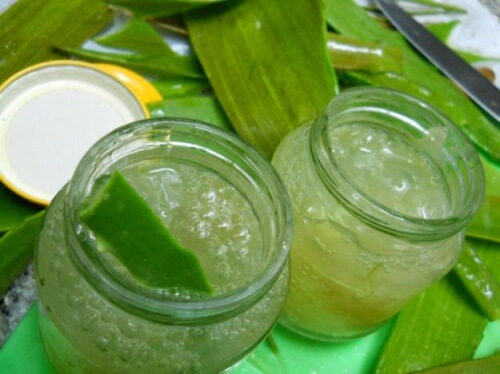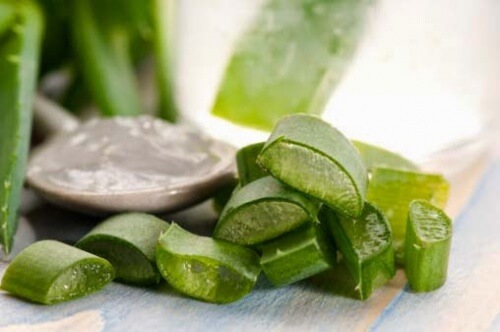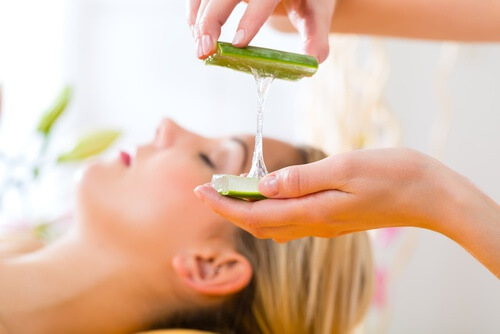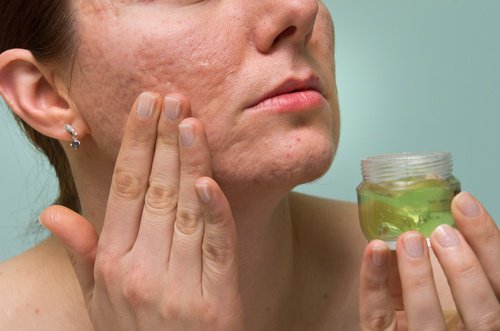How to Make Homemade Aloe Vera Gel


Reviewed and approved by the doctor Gilberto Adaulfo Sánchez Abreu
Aloe vera highly valued for its many health benefits, and you can make the most of them with homemade aloe vera gel. It has astringent, antibacterial, and hydrating properties. So, it can help regenerate your skin, keeping it young and blemish-free. It’s also one of the best natural fresheners and wound-healers, making it perfect for treating sunburns and other skin damage.
Aloe is made up of a lot of water, but it also contains a significant amount of vitamins A, C, and E. These are all antioxidants that prevent oxidative damage. This, along with several other factors, has made aloe vera a basic ingredient for a ton of commercial cosmetic treatments.
But if you want to get the most out of these qualities, it’s best to use it in its 100% natural state. That’s why we are going to share a simple recipe with you below for homemade aloe vera gel, along with how to use it.
How to make homemade aloe vera gel

Ingredients
- 3 aloe vera stalks
- 1 Tbsp. lemon juice (10 mL)
- 1 Tbsp. wheat germ oil (10 mL)
Directions
- First, water the plant daily for five days before making your gel. This will ensure that it’s in the best state possible when you harvest it.
- After you’ve done that, cut off three stalks, or however many you find necessary, to extract the gel.
- Once you’re ready, remove the side spines and place them in a bowl of water for at least 24 hours. Change the water every 3 to 4 hours so that each stalk releases a substance known as aloin, which could be toxic if it stays in the stalk.
- After 24 hours have gone by, remove the stalks from the water and extract the pulp. Then continue with the gel preparation.
- Use a knife to open each stalk on one side.
- Then, using a spoon or spatula, extract the gel and set aside in a bowl.
- Add the lemon juice and wheat germ oil, which strengthen the aloe’s properties by providing vitamin E and other antioxidants.
- Once everything is ready in the bowl, mix at a medium-high rate until it turns into a thick, white cream. Blenders are fine, but don’t use an egg beater.
- Lastly, pour the product into a sealed glass container and refrigerate it so that it will keep longer.
Application

- Whatever you’re using it for, take however much you feel is necessary and spread it over the affected area.
- It’s always good to repeat the application process three times a week in to get faster results.
You might like: Treat Varicose Veins With Aloe Vera, Carrot and Apple Cider Vinegar
How do you use your homemade aloe vera gel?
The greatest benefit of this natural product is that you can use it every day for all kinds of issues.
It has unique nutritional properties and does not create any negative side effects when used topically.

You can use it to:
- Clean, moisturize, and regenerate skin.
- Cleanse clogged pores.
- Prevent various degrees of acne.
- Reduce irritation and inflammation.
- Reduce blemishes, scars and blisters.
- Prevent pimples, blackheads, and whiteheads.
- Reduce the negative impact of the sun’s rays.
- Soothe burns.
- Prevent and reduce stretch marks.
- Control itching and flaking associated with seborrheic dermatitis and psoriasis.
- Prevent premature aging.
- Tone and firm.
- Reduce bacteria.
- Treat dryness and cracking of the heels.
Read more: 5 Causes of Premature Aging
As you can see, making a natural, homemade aloe vera gel isn’t hard at all. It can also be very useful when it comes to keeping your skin beautiful.
Now you have a recipe and a lot of possible uses for your aloe vera gel, and it can become one of your best friends for keeping your skin radiant.
All cited sources were thoroughly reviewed by our team to ensure their quality, reliability, currency, and validity. The bibliography of this article was considered reliable and of academic or scientific accuracy.
- Hamman, J. H. (2008). Composition and applications of Aloe vera leaf gel. Molecules. https://doi.org/10.3390/molecules13081599
- Dat, A. D., Poon, F., Pham, K. B. T., & Doust, J. (2014). Aloe vera for treating acute and chronic wounds. Sao Paulo Medical Journal. https://doi.org/10.1590/1516-3180.20141326T1
- Rajeswari, R., Umadevi, M., Rahale, C. S., Selvavenkadesh, S., Kumar, K. P. S., & Bhowmik, D. (2012). Aloe vera: The Miracle Plant Its Medicinal and Traditional Uses in India. Journal of Pharmacognosy and Phytochemistry.
This text is provided for informational purposes only and does not replace consultation with a professional. If in doubt, consult your specialist.








